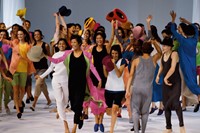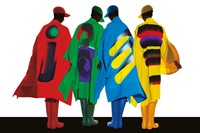“I believe there is hope in design. Design evokes surprise and joy in people.” This was the late Japanese designer Issey Miyake’s abiding maxim – and a perfect epithet for the enduring impact of his liberating, illuminating garments on the world of fashion.
They are also, fittingly, the words which open Taschen’s recently released publication Issey Miyake, a complete overview of the designer’s career from 1960 until his death in 2022. Compiled by Midori Kitamura, the chairman of Miyake Design Studio, who worked by the designer’s side for over 50 years, the tome weaves the technical details of his career in with human reflections on the designer’s life.
As the publication pinpoints, it was Miyake’s experience of Paris’ May 1968 student riots that redirected his course from haute couture to creating “universal clothing that everyone can wear.” His interest was not in sculpting or prescribing body types, but rather in exploring how clothes worked with the human body, folding and expanding within the dynamic dialogue of fabric, skin, and the outside world. His line Pleats Please, which he considered his most important invention, was the exact embodiment of this intent: the heat-pleated polyester follows with ease and elegance each turn of the life lived within it.
Just as musical scores are considered unfinished until they are played, Miyake considered his designs incomplete until people lived, danced and evolved in them. So, to mark the release of Taschen’s Issey Miyake, we spoke to four of the designer’s devotees – Charlene Prempeh, Laila Gohar, Suzy Menkes, and Lou Stoppard – on how his creations have seamed into each of their lives.
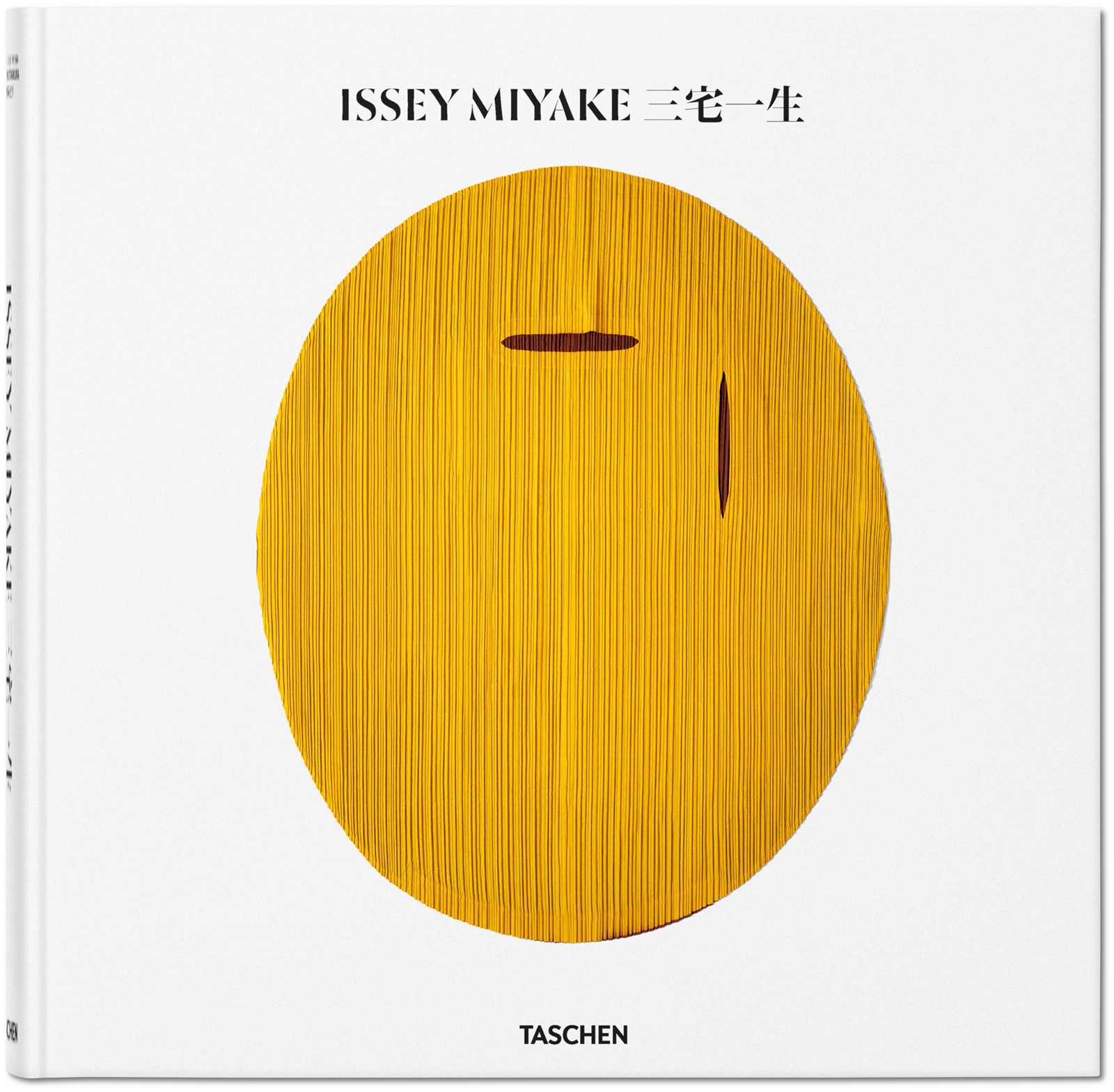
Laila Gohar, Artist
“As a kid, my mum wore Pleats Please so I guess there wasn’t really a ‘moment’ when I discovered it. It’s just something that I grew up with and has always been around me. It’s timeless.
“The pleated fabric almost feels like I’m wearing paper in a really good, comfortable way. You can wear it everywhere and it’ll never be wrong. I can’t think of many garments like this. I’ve worn Issey pieces to weddings, and I’ve worn them to work. I love the colours, and I get really excited when they drop a certain colour. I like that it’s outside of the fashion calendar. Nothing about it is trendy – the garments are forever.
“Technically, it’s genius. I like the fact that he invented the technique. And that it doesn’t take up much room in your closet or in your suitcase. If you’re travelling, it will never be wrinkled. You’re not going to be running around trying to find a steamer or hanging over a steamy hot shower in some hotel room. That doesn’t happen; it just always looks so good.”
“Nothing about Issey Miyake is trendy – the garments are forever” – Laila Gohar
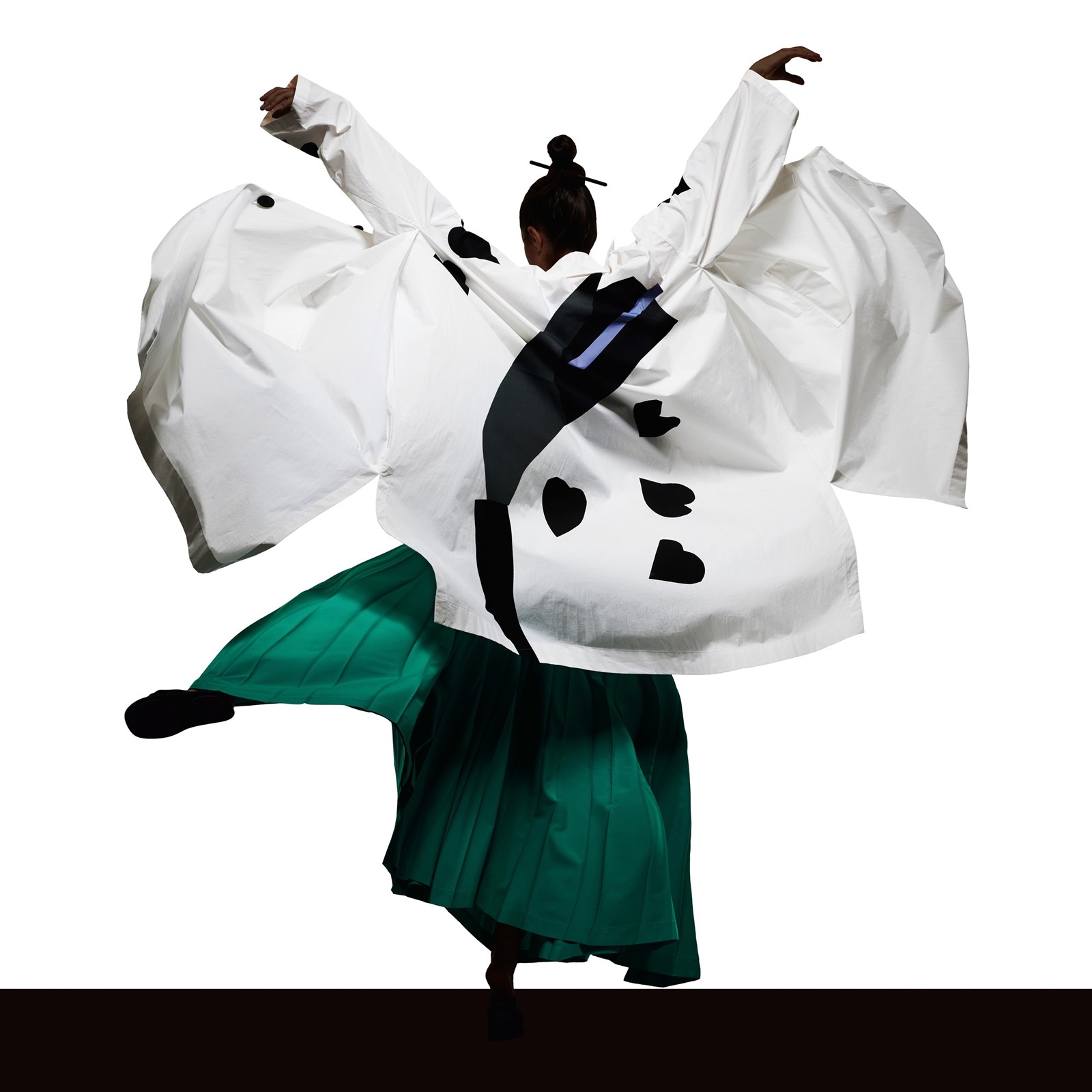
Charlene Prempeh, Founder of A Vibe Called Tech
“My first memories are of Pleats Please, probably at university. Some of the chicer teachers would be wearing it. There was always a sense that it was very easy to wear, and that in sheathing oneself in Pleats Please, you could immediately create a whole look. There was something very appealing in that for me when I was young – a kind of intellectual, innate understanding of style.
“When I started collecting pieces, it was when I needed to look professional but stylish and put together. I wanted to communicate that I had an understanding of silhouettes and an attachment to particular brands. To me, wearing Issey Miyake meant that you were part of a particular tribe.
“Now, it’s really become the bedrock of any travel I do. We work within the art world and in fashion and a lot of the time, when we are travelling, it’s for fairs or creative events. I cannot stress enough the relief I feel when I open my suitcase and remember that I’ve packed all my Issey Miyake pieces! You know that you’ll look good and all of the nonsense prior to going out is erased. And it’s this feeling that it communicates what I care about – it says something about what intellectual tribe you’re a part of.
“I wore a lot of it when I was pregnant, and I loved how it moved with my body. The dresses, skirts and tops are perfect for that changing shape. I love the idea that I’ll be wearing it in my mid-twenties and my mid-eighties because, not only does it move with your body shape, it moves with your life. I can’t think of many other brands capable of doing that.”
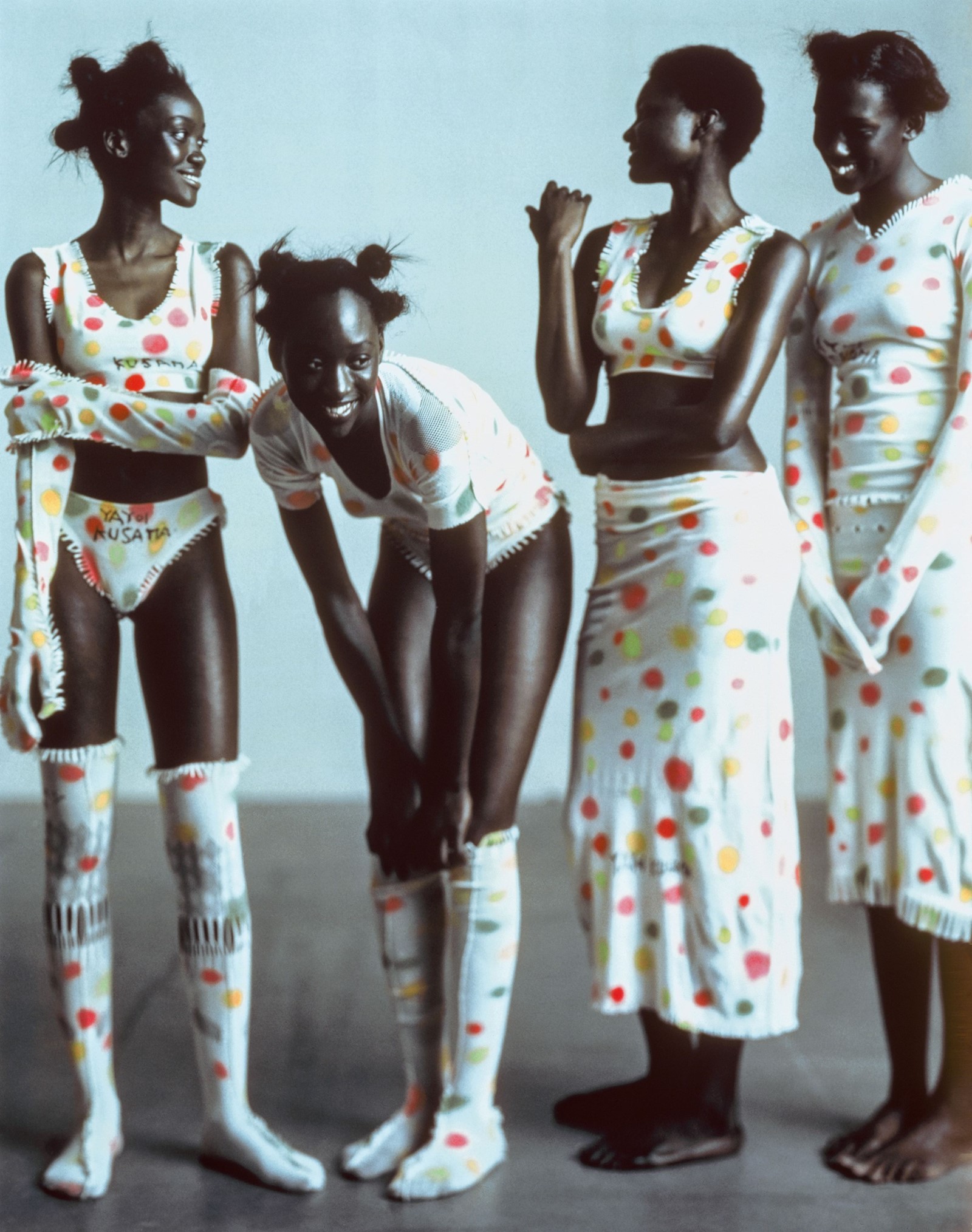
Suzy Menkes, Fashion Critic
“The surprise from Issey Miyake was the sense of clothes that moved with the body. The towering fashion leader in the second part of the 20th century was Yves Saint Laurent, but his clothes were designed to shape the body. The Issey Miyake concept was to FREE the body – perpetual movement inside the cloth. I was travelling to East Asia and I understood early on that there were different attitudes about covering the body across the world.
“I have worked all my life, with children and now grandchildren. I expect my clothes to work as hard as I do. I wore Issey Miyake’s clothes – especially when stepping off an aeroplane – and straight off into action. I have worn Miyake to go to Buckingham Palace to see the Queen of England. Who could ask for anything more?”
“Fashion makes you feel like you’re lucky if it fits you, rather than being like – does this actually make me feel great? And Pleats Please does” – Lou Stoppard
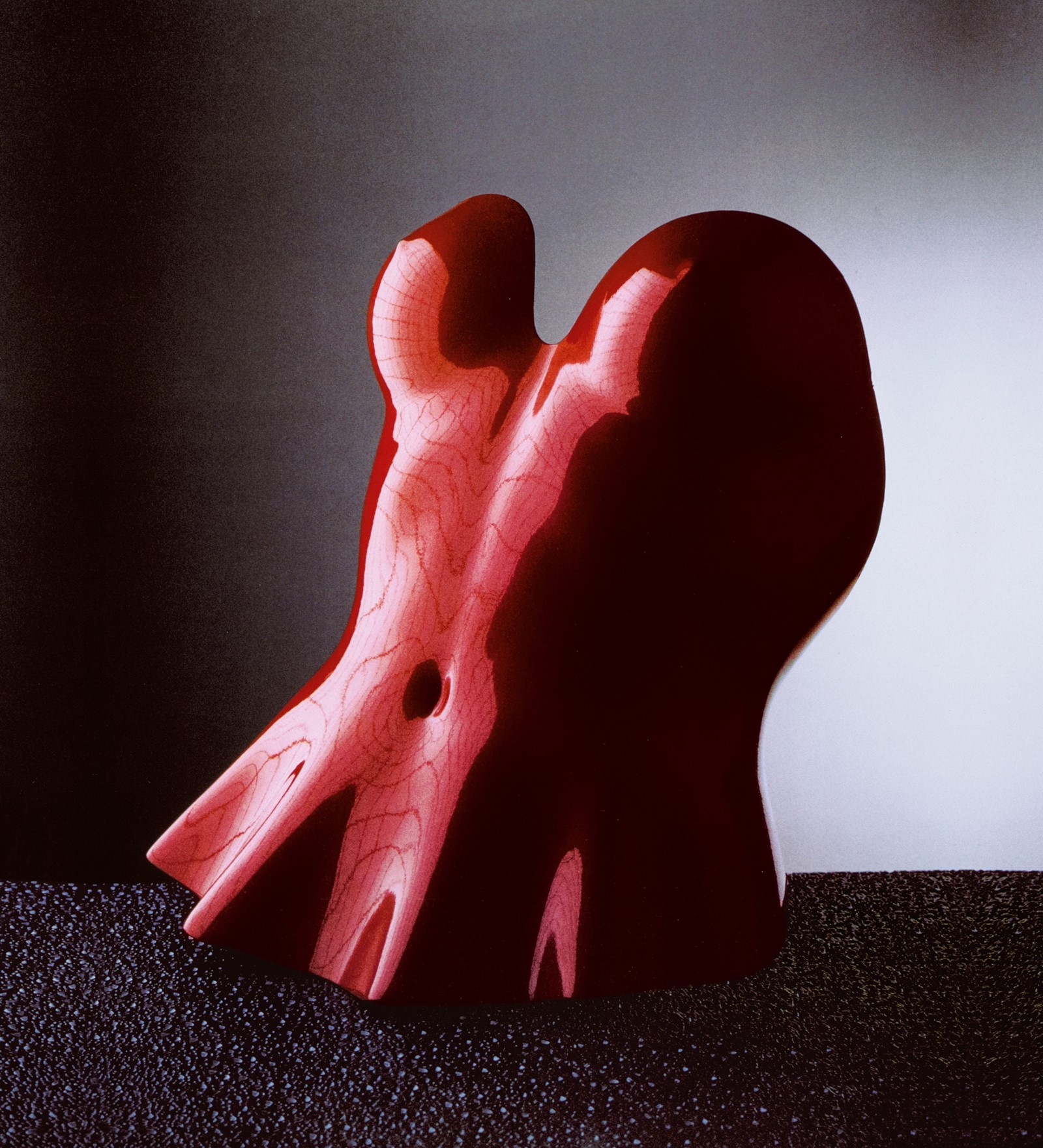
Lou Stoppard, Writer and Curator
“I got into Pleats Please in my early twenties. At that point, there was an association between it and slightly older women, and I enjoyed that it was an unusual thing to wear. I found it really practical because you can throw it in the washing machine. I’m very, very lazy with clothing maintenance, and I travel a lot for work, so it’s easy.
“I buy a lot of vintage Pleats Please as I’m quite obsessed with collecting different kinds of designs from interesting collections. I spend at least an hour a day scouring Japanese auction sites. I’ve got some really special pieces – I have the ‘moon landing’ top from the Apollo Moon Landing series. And I have pieces from the artist collaborations, like a top from the collection with artist Cai Guo-Qiang which looks burnt. You can buy something from 20 years ago and it’s still as good as it was then.
“I have a small baby now, but I didn’t actually buy any maternity clothes. When I was pregnant, I just wore Pleats Please and, after she was born, I kept wearing Pleats Please because my body was sort of expanding and contracting with the pleats and I really liked that. I’m actually getting married this weekend and I’m wearing Pleats Please as one of my wedding outfits: a big white Madame-T scarf with white trousers.
“It always looks better if you do a full look, like a Pleats top and trousers. Some people would find that prescriptive but I find it quite freeing because you know what to wear each day. I like that you feel special, but you’re in remarkably practical clothing. And I’ve always loved that Miyake’s designs are totally devoid of cynicism. A lot of fashion today is knowing and cynical and laced with a kind of satire. Miyake just feels super intelligent. It’s not like there aren’t interesting stories and ideas behind it, but it feels like it’s floating – the garments themselves but also the ideas.
“And I like how it makes you feel in your body. I often find that fashion makes you feel like you’re lucky if it fits you, rather than being like – does this actually make me feel great? And Pleats Please does.”
Issey Miyake is published by Taschen, and is out now.

